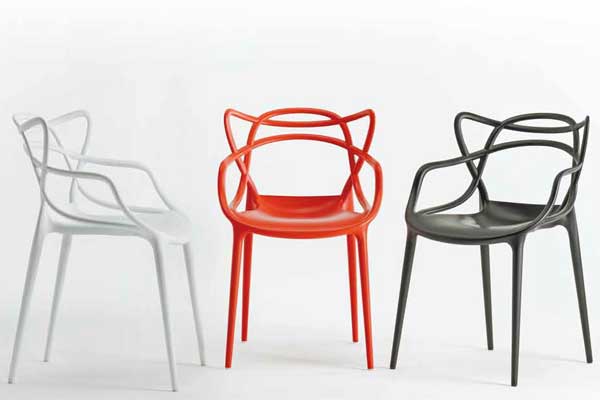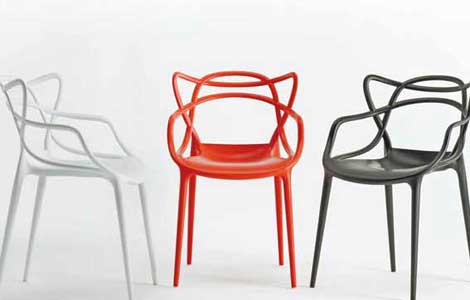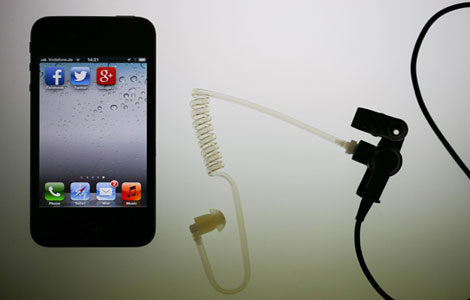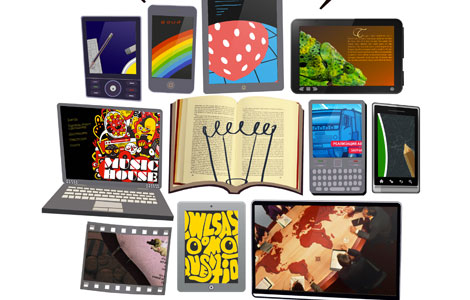Luxury dresses in plastic
Updated: 2013-07-16 23:27
By Sun Yuanqing (China Daily)
|
||||||||
Kartell, an Italian brand known for its designer plastic furniture, has opened its first store in the Chinese mainland. Sun Yuanqing finds out more about the uniqueness of the new material.
Ultramodern plastic furniture looks cool in The Devil Wears Prada and Boston Legal, but how would they match with heavy wooden Chinese cabinets?
While most Chinese homes still prefer age-old furniture made from precious wood, some are going for a modern twist.
 |
|
Kartell introduces its ultramodern furniture, such as the Masters Chair and Bourgie Lamp, to the Chinese market. |
"China is now ready to understand luxury conveyed by minimalist design and new material, also to understand the difference between originals and copies. We are here to make them understand our philosophy and the world of industrial design," says Ferruccio Laviani, artistic director for Kartell, an Italian brand known for its designer plastic furniture.
"What we do is to make complements. You can take a transparent polycarbonate plastic chair and put it alongside an old piece of furniture handed down from the family. This would make a more interesting and personal style," he says.
Kartell opened its first mainland boutique in Beijing in late May.
"In the past, when we flew to Asia, it was more about Hong Kong and Singapore. But China (the mainland) has been a more interesting destination lately," he adds.
With more than 130 flagship stores and 220 in-store shops around the globe, Kartell is planning to open 50 stores in China within five years. Two will be opened in Shanghai and one in Chengdu, Sichuan province, later this year.
Aside from a handful of Western movies and television series, Kartell's designs have also appeared in a popular Chinese movie Go Lala Go!
Just as he believes that a furniture collection mirrors the characteristics of the owner, Laviani also advocates impromptu in the usage of furniture.
"For example, a bench could be used for sitting, as well as a table. It's up to you how to use it."
Kartell could be a role model for Chinese home designers, said Steve Leung, Hong Kong-based architect and interior designer, as he attended the opening ceremony of the Beijing store.
"The way they use plastic to make unique modern furniture is very refreshing and prospective. There are so many opportunities coming out of the new techniques and materials that Chinese home designers can explore, just like Kartell did," Leung says.
Unlike in Milan, New York and Paris, Laviani employs a more glamorous layout and lighting in the Beijing showroom to help people understand the value of the products.
"We try to emphasize every object. For people who are not used to this kind of design, we try to explore a new way to explain to them."
Born in Cremona, Italy, in 1960, Laviani studied at the Design Polytechnic of Milan and later obtained a degree in architecture at the Polytechnic of Milan in 1986. He has since been working as an architect and designer.
Laviani was in China several times to design the stores for Dolce & Gabbana in Beijing and Shanghai, as well as for Flos Spa in Hangzhou and Hong Kong. All these different jobs inspire him in different aspects, he says.
Originally a minimalist, Laviani has become more attracted to baroque styles since his cooperation with Dolce & Gabbana 13 years ago.
"At the time, I always hated gold as a finishing on furniture. I thought it was quite vogue. I didn't use it also because I was scared to use it, because I thought I wasn't able to use it in the right way."
With the cooperation with Dolce & Gabbana, Laviani finally "learned the right way to use gold". He then made the signature Kartell Bourgie Lamp with a gold finish, which later became one of the company's best sellers, along with the iconic transparent Louis Ghost chair by Philippe Starck.
For Laviani, inspiration comes from everywhere except design itself.
"When I'm at home, the last thing that I want to see is design newspaper and blogs. Neither do I like talking about design with my friends, who can be doctors and lawyers. Talking with different people about different things gives me inspirations for my job."
Having been designing for nearly three decades, Laviani is looking for new challenges that he has never faced before.
"I already designed everything that I like. What I need now is to have somebody to come to me and offer something that I never did before, something that allows me to use my brain in different ways.
"I don't like it when people call just because they want something signed by me but they don't understand my possibility. It's frustrating that they just want you in their catalog, but in reality they don't appreciate the things you do. For me, designing a suitcase could be more interesting than designing an airplane."

 Panama finds 'missile equipment' aboard DPRK ship
Panama finds 'missile equipment' aboard DPRK ship
 Free on his feet
Free on his feet
 Extreme heat causing vehicle fires
Extreme heat causing vehicle fires
 Men, you look good in slim elegant cut
Men, you look good in slim elegant cut
 Luxury dresses in plastic
Luxury dresses in plastic
 Obama urges restraint amid protests
Obama urges restraint amid protests
 Putin wants Snowden to go, but asylum not ruled out
Putin wants Snowden to go, but asylum not ruled out
 Apple to probe death of Chinese using charging iPhone
Apple to probe death of Chinese using charging iPhone
Most Viewed
Editor's Picks

|

|

|

|

|

|
Today's Top News
Merkel's rivals go on attack over US spying
'Missile equipment' found aboard DPRK ship
Egypt's interim govt takes oath
Gay marriage to be legal in UK
China signs cooperation agreements with Belarus
Asiana crash passengers sue Boeing
Li highlights economic restructuring
Philippines' accusation refuted
US Weekly

|

|





